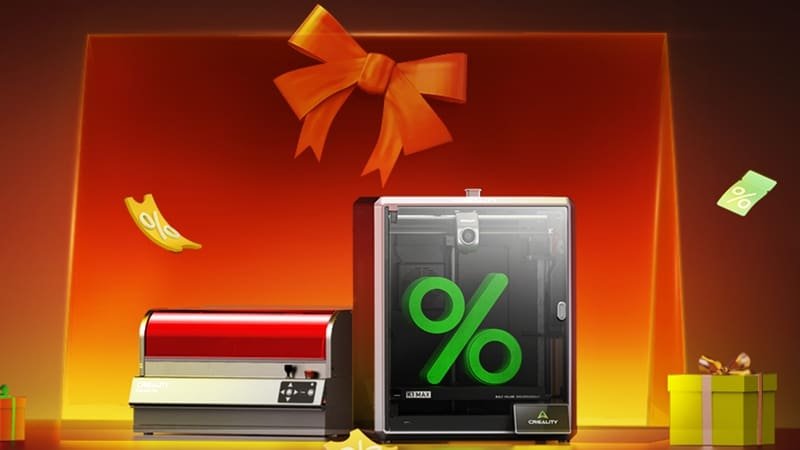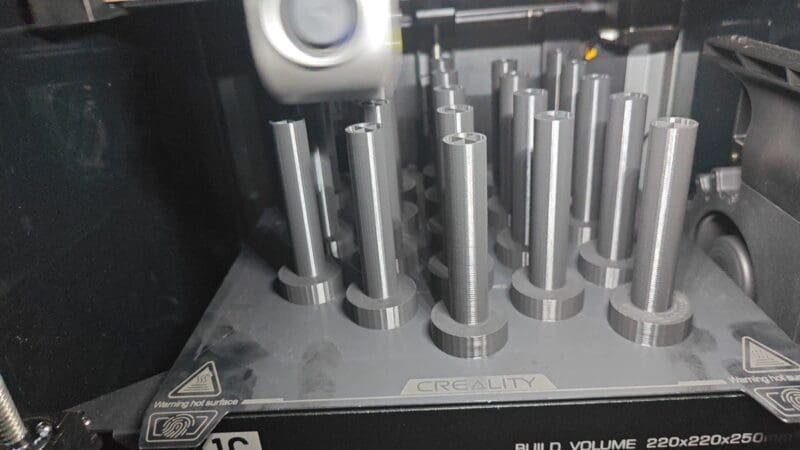Understanding 3D Printer Model Design and Print Head (Part 1)

Good day everybody – Welcome to 3D Printing World with 3DPadvisor. When you come into the 3D Printing World which is considered an Advanced Tool for Industries, Professionals, hobbyists or just following the trend, apparently you need some basic understanding.
Some people thought 3D Printer is just simple things – a small machining that moves here and there, but the truth is actually complicated design and component involve. It’s not just glued gun deposits PVA stick building 3D models. Technical and Engineering stuff involved deeply in 3D Printer. So let’s get some knowledge about model design and print head in this post.
1. 3D Printer mechanical design.
There are a lot of 3D Printer types and designs in 3D Printer. This is your primary tool so you have to know it first before you jump in. According to size, this is the design type of a common FDM 3D Printer:
Cantilever Gantry model:
This model is a simple model and design 3D Printer. X-Grantry movement is only supported by single Z-axis.
The advantage is: cheap (less material to produce), simple movement, only uses small space to do 3D Printing, and easy to carry as it’s not heavy.
On the opposite: Only can print small objects because of the limitation of the mechanism, Precision is hard to get, and very low speed as a lot of vibration occurs during printing movement.

I3 Style 3D Printer: the most popular
i3 Style design was presented by the famous Josef Prusa in 2012 and ‘I’ stands for iteration third of Prusa Design. The simplicity and stability make it very popular 3D Printing in the REPRAP era. As an Open Source design, many 3D Printer manufacturers create this since it is very easy to manufacture and build (and cheap).
The stability although it’s not perfect – is sufficient enough to produce an acceptable nice quality 3D Print model. The main drawback is build volume is also still limited as a lot of concerns and problems printing high tall models. This Y-axis Slinger Bed design creates another obstacle in High-Speed movement. But this ingenious model design is very easy to modify – yet become VERY STRONG in 3D Printing.

Cubic Style 3D Printer: Most basic standard stable mechanism.
The cubic Style 3D Printer is so classic. XY coordinate nozzle move along and Z Up-down bed movement inside Cube Frame. As The frame foundation is rigid. Mechanism failure is less in this style. A lot of material is needed to build the frame hence creating a heavy body and limited building size (inside the frame). Troubleshooting the Printer also takes more time compare to Cantilever or I3 Style.
The good things are cube is very stable, the enclosed type of printer can be set easily (most of it enclosed) to achieve stable temperature plus dust free, capable of high-speed movement, and less danger as the cube frame protect everything inside. Yes, this Cubic Style Printer 3D is more pricey than the other 2 on previous. But with this customers can print to the full range of FDM/FFF Filament material with less modification.

Delta Style 3D Printer: Big TALL Volume Print – easy.
In 2012 another Great Invention by Johann Rochol created the First Delta Style 3D Printer. Based on Triangular movement along Z-Axis, Delta Style is very stable even with heavy payload on the extruder. This is why Delta printer can be built to accept the challenge – BIG PRINT in 3D Printing. As they use somehow complicated calculations and the round movement along XY-axis this printer is not cheap. High-end computation is needed rather than simple XY movement. Limited Round area also must be put into consideration, especially for precise square model. This style 3d printer can reach a high 3d printing speed, some can be more than 1000mm/s.

6DoF Robotic Arm Mechanism
On The Last 6 years – Cheap Robotic Arms improved very fast. Looking back again – Well thanks to 3D Printing Technology. And now instead of just picking up a small thing or pressing a button. DOF Robotics Arm tip can be used to extrude 3D Print Filament (DexArm Robotics). You already have a 3D Printer with Robotics Arm. Precision is a big concern with this mechanism but build size becomes unlimited. Robotics and automation is Industrial advancement – and that creates almost no limit boundary. For example, A bridge was built by 3D Print in the Netherlands using this mechanism.
Based on the above those six 3D Printer Design – Type Points A and B are the most popular people using today (consumer level). Experience with shaky printing and not leveled beds are the first 2 major mechanical problems that users will face.
Make sure you understand the general drawback of your 3D Printer mechanic. It moves all the time during printing – and you need it to move correctly for successful printing.
2. Print Head Part.
Your 3D Printer is ready – after you assemble and set up nicely. You straight away insert 3D printer filament successfully and hit print. Then disaster: Printing in the middle air, Printing not nice, clicking sound and clogging, and the worse: scratching the bed, hitting the printing model because of too much material, and damaging the mechanism you set up earlier. It’s because of one problem – You don’t check your Print Head: The Extruder and hotend. This 2-part combination cannot be separated in condition when you try to troubleshoot after the problem comes. Two Style System: Direct Extrusion and Bowden (or Remote) Extrusion. And here are the pros and cons of those 2 models:
Direct Drive Extruder: Direct Drive Extruder actually Extruder Part (the one that feeds the Filament wire) close together with Hotend Part (the one that melts the Filament wire). Very close so it looks as one set of parts.
Pros:
- Precise control of 3D printer Filament extrusion.
- Less Retraction – a very smooth surface can be achieved.
- Easy to print Flexible Material.
- Low-Torque Motor is sufficient to feed material.
- Can Print all materials including Flexible and High temperatures.
Cons:
- Heavy since motor mount on X-axis Gantry – big concern of moving print head.
- Slow Printing due to heavy parts.
- Difficult to maintain.
- Cooling Problem on every part of Hot Chamber 3D Printer.

Bowden Extruder: Bowden Style Extruder actually is 2 parts of Extruder dan Hotend within a bit long distance. Usually is about 30-45cm long using PTFE Tube. The Filament pushed through the tube and on the distance hotend. It’s so simple and you can see the extrusion process of 3D Printing very clearly.
Pros:
- Lightweight – very fast-moving print head can be achieved.
- Easy to assemble and maintain.
- Can be applied easily on various 3D Printer mechanisms as print head weight is not a concern.
- Heat Chamber is not a problem as the motor to feed can be installed outside the chamber.
Cons:
- Require additional long PTFE tube for material feeding.
- Controlling extrusion is difficult.
- Require a Higher Torque motor to feed the Filament.
- Very Limited material can be printed as Flexible Filament cannot be printed well and High Temp material requires full metal hot end part instead of using PTFE which only can stand max at 260C.


On next Part – I want to share about the 3D Printer Electronics, First Setting and some information of popular Slicer Software. So stay tune…..
DISCLOSURE: THIS POST MAY CONTAIN AFFILIATE LINKS, MEANING I GET A COMMISSION IF you DECIDE TO MAKE A PURCHASE THROUGH MY LINKS, AT NO COST TO YOU. PLEASE READ MY DISCLOSURE FOR MORE INFO.



